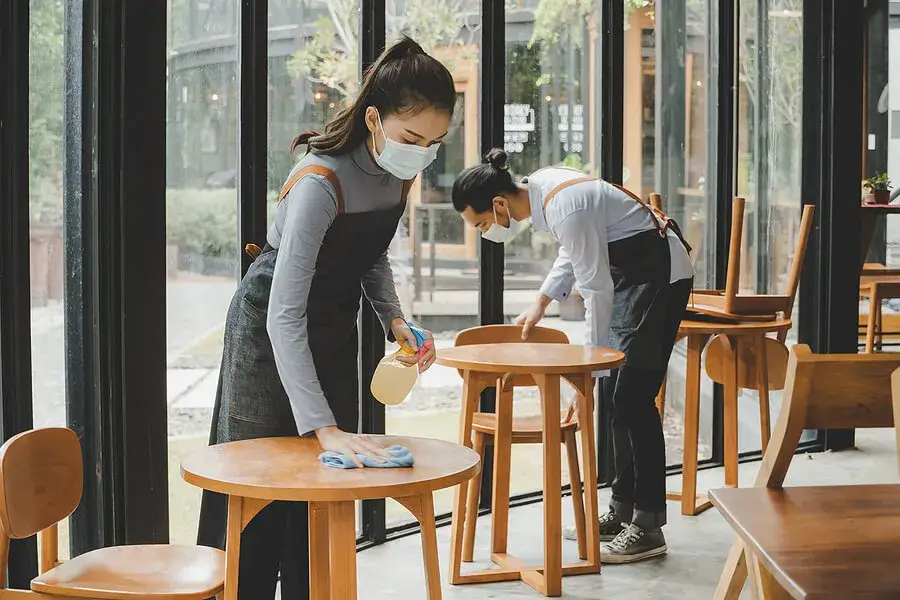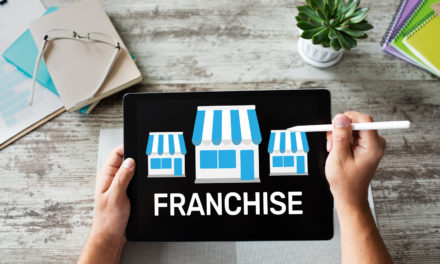It’s a new world for restaurant franchise trends. There’s no denying the impact of the COVID-19 pandemic on the industry. Just two statistics include 110,000 restaurants closed and sales $240 billion lower than anticipated. Full-service restaurants have seen a 36% decline in sales revenue.
However, it’s not all bad news. As state COVID restrictions ease, we can start to see evidence of franchises thriving after the pandemic. In this post, we’ll look at the restaurant franchise trends since 2020, and see what the future of franchising in 2022 looks like post-pandemic:
- Restaurant Takeout and Delivery
- Online Ordering
- Shorter Restaurant Menus
- Local Restaurants are gaining interest
How COVID-19 Impacted Restaurant Takeout and Delivery
The hospitality industry was one of the hardest hit by the pandemic. Restaurants were forced to close their dining rooms in March 2020, and two years later many still have not fully reopened. However, plenty of restaurant owners adapted rapidly to these changes. Many kept their kitchens open to serve drive-through, takeout, and delivery orders.
The delivery market in the U.S. grew fourfold between 2018-2022. During that time some delivery services increased the fees they charged restaurants for orders. Because of the pandemic, many metro areas capped these fees. This reduced costs for restaurant owners.
In June 2021, San Francisco became the first area to make the fee cap permanent. That secured restaurants’ access to a critical revenue source without the crippling costs. Restaurant franchise trends point to better relationships with delivery apps at prices restaurants can afford.
Restaurant Franchise Trends in Online Ordering
Customers’ complaints about rising fees and slow delivery from third-party services resulted in a dramatic increase in online ordering. Today, 70% of consumers say they prefer to order directly from the restaurant. This means restaurants that invest in digital ordering technology are primed for future success
In a 2018 study, experts predicted the global online ordering market would be worth $365 billion by 2030. Then COVID happened, dramatically accelerating that trend. From a predicted 20% annual growth rate, the adoption of online ordering technology jumped a massive 3,868% between February and April 2020.
For restaurants like Shawarma Press that already offer online ordering, these figures are good news. Consumers prefer online ordering, and 92% of diners intend to keep using these services post-COVID. Restaurant franchise trends show that this is an important investment to make.
The Impact of COVID-19 on Restaurant Menus
Another place we can look for restaurant franchise trends is in restaurant menus. Between closed dining rooms and a global supply chain crisis, large menus are becoming a liability for restaurant owners. Problems with products, such as out of stock items, drive around a third of negative reviews. And it doesn’t matter how perfectly something can emerge from the kitchen if it doesn’t travel well for home consumption.
Many restaurants have streamlined their menus to reduce costs and complexity since the start of the pandemic. Focusing on fewer items, but doing them well, is much more important. Even major chains understand this, with concepts like IHOP cutting their 12-page menu down to just two pages.
This restaurant franchise trend fits perfectly into Shawarma Press’s existing business strategy. We serve a simple menu of scratch-made products that can adapt easily to supply chain issues or seasonal availability. The Shawarma Press menu is a leading example of how restaurants can thrive by serving a streamlined selection of irresistible dishes.
More Post-COVID Restaurant Franchise Trends
One trend that has gone largely unnoticed so far is how consumers are rewarding their local restaurants. Since the start of the pandemic, food deals and discounts have declined 15%, as restaurants struggled to adapt to difficult times. But customers still value their local restaurants, even if they are paying higher prices than they were two years ago. In fact, what COVID has shown is that menu prices aren’t the only factor consumers consider when weighing value.
Since the start of the pandemic, consumer satisfaction with restaurants has actually increased, despite supply chain issues, rising prices, and slow and expensive delivery services. Customers are more forgiving of delays, are tipping more, and are rewarding restaurants with more business. Consumers spent $769 billion ordering food in 2020, and that trend shows no sign of slowing.
While COVID was devastating for much of the restaurant industry, it isn’t likely to remain so. Investors also see growth in the industry’s future. The Savory Fund has invested aggressively in restaurants throughout the pandemic.
The Future of the Restaurant Franchise Industry
According to Derek Domino, the VP of Sales at Bbot, COVID didn’t change restaurant trends. Instead, it accelerated them by ten years. The adoption of digital apps and ordering switched on in months, not years. Restaurants developed a real online presence and invested in multiple revenue streams. These moves had already started within the industry.
All of these trends favor one type of restaurant most of all — quick-service franchise restaurants. They are now in a prime position to thrive in a post-COVID world.
QSR franchises such as Shawarma Press have validated their business model through the pandemic. Their survival — and growth — demonstrate that the model works. And that’s a valuable commodity in an industry that has struggled in the past few years. Industry experts believe now could be the best time for investors to open fast-casual franchise restaurants.
Invest in a Shawarma Press QSR Franchise Restaurant
At Shawarma Press, our streamlined menu and digital order capabilities primed our restaurants to fare well during COVID-19 and beyond. If you’re inspired by our story and want to be part of our post-pandemic future, get in contact today to learn more about opening your own Shawarma Press location.





